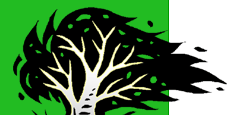|
NSF Proposal - 10. Results from Prior Support
Jeffrey Boore. NSF 9807100. "A
Phylogeny of Major Metazoan Radiations". 1998-2001, $200,000.
We determined complete mitochondrial genome sequences for 25 phylogenetically
diverse invertebrates. Several contentious higher level relationships
were robustly reconstructed using mitochondrial gene arrangement
characters: Pogonophora are a family within Annelida; Platyhelminthes
and lophophorates fall within Eutrochozoa; Sipuncula are more closely
related to Annelida than to Mollusca; insects evolved within Crustacea,
not from myriapods. We have also developed models for gene order
rearrangements and explored many aspects of mitochondrial DNA structure
as well as their impact on phylogeny reconstruction. 16 publications
to date.
Michael J. Donoghue. NSF 9806937,
"Duplicate genes and plant phylogeny: phytochromes and the
rooting of the seed plants, angiosperms, and eudicots", 1998-2001,
$180,200.
A series of phytochrome gene duplications were used to root the
seed plants, the angiosperms, and the eudicots. CHR (3): Three undergraduate
women. Four publications to date.
Dina Mandoli. NSF 9630618, "Cell
biology & genetics of Acetabularia phenotypes that are arrested
in development", 1996-2000, $200,000.
We completed all 3 Aims: 1) we finished inbreeding near isogenic
lines proving that we can perform genetic manipulations; 2) we demonstrated
that high- throughput transformation and selection work well; and
3) we studied development, compensation and genetics of developmentally
arrested phenotypes. This research makes development of insertional
mutagenesis of A. acetabulum feasible. 16 publications to date.
CHR (29): 1 postdoctoral fellow (NSF), 4 graduate and 24 undergraduate
students. Includes 17 women, 10 minorities, 2 learning disabled,
8 Gates or Hughes Fellows. 24 out of 29 plan or have careers in
science.
Brent Mishler. USDA 94-37105-0713
(DOE/NSF/USDA Collaborative Research in Plant Biology), "The
Origins and Phylogeny of Green Plants: A Research Coordination Group";
1994-2000, $285,459; NSF 0090227, "Beyond 'Deep Green': Towards
an Integration of Plant Phylogenetics and Plant Genomics";
2001-2006, $496,434.
The Green Plant Phylogeny Research Coordination Group (GPPRCG; "Deep
Green"), has been working since 1994 to facilitate the reconstruction
of an ever more resolved phylogeny. See full progress report at:
http://ucjeps.berkeley.edu/bryolab/greenplantpage.html.
Preliminary results of the GPPRCG were presented in a series of
eight symposia at the XVI International Botanical Congress in 1999
and published in a series of papers in specialized professional
journals, as well as numerous reviews. Progress of a new effort
of this group, supported by an RCN grant "Deep Gene",
can be found at: http://ucjeps.herb.berkeley.edu/bryolab/deepgene/index.html.
Many professional workshops, research visits, and student training
activities have already been supported.
Charles J. O'Kelly. DEB-0075601, "Towards
a Monograph of the Ulvellaceae (Ulvophyceae, Chlorophyta) and related
green algae", 2000-2004, $320,000.
We are finding: (1) numerous new species (at least 15) within this
assemblage; (2) significant lack of support for generic concepts
based on morphology, some genera are polyphyletic at the class level
(Friedl and O'Kelly 2002) while others (especially those in the
Ulvellaceae sensu stricto) cannot be sustained; (3) assortment of
these algae among five putative clades, including the Cladophorales,
the Ulotrichales, the Ulvaceae and Kornmanniaceae of the Ulvales,
and a clade, previously unrecognized at the molecular level, basal
to other Ulvales and possibly identical with the "Ctenocladaceae"
of some morphological classifications. One publication to date.
CHR (3): one postdoc and 2 research technicians.
Richard Olmstead. DEB-9727025, ?Chloroplast
DNA Phylogeny of Basal Angiosperms?, 1998- 2001, $205,000; DEB-
0090313; "Chloroplast DNA Phylogeny of Seed Plants and Basal
Angiosperms", 2001-2004, $240,000.
We identified 17 chloroplast genes (Graham and Olmstead 2000a) that
permit resolution of ancient land plant radiations (e.g., low synonymous
substitution rates and low site-to-site rate heterogeneity) to analyze
~15kb of data. Our evidence suggests that full resolution of the
basal angiosperm radiation is possible with high levels of confidence.
My current NSF grant expands this work to include more extensive
sampling in seed plants and other major land plant lineages in collaboration
with Sean Graham (U. Alberta). Chara and Coleochaete are included
as outgroups. Four publications to date. CHR (10): one postdoc,
2 research technicians, 3 grad students (partial support), and 6
undergrads on REU suppl., including 2 minorities.
Karen Renzaglia: DEB-9527735. °Spermatogenesis
in "pteridophytes": ultrastructure, differentiation and
phylogeny.° 1996-2001, $140,000.
Our major research findings fall into two categories: (1) comparative
information on cellular development and structure in land plants
and (2) contributions to clarifying evolutionary trends and resolving
phylogenetic relationships among basal embryophytes. We have provided
detailed descriptions of sperm cell architecture and cellular development
in pteridophytes, bryophytes, green algae and seed plants. Our work
reveals that structural and developmental complexity in plant sperm
cells are unsurpassed in any other group of organisms. We have generated
new data, assembled published data and analyzed one of the most
comprehensive data bases of both morphological and molecular data
associated with the phylogeny of land plants. 27 publications to
date, 6 with undergraduate co-authors. Nine undergraduates, one
doctoral student and three master's students have worked on plant
spermatogenesis since 1995.
Alan Smith: DEB-9616260 "Collaborative
research: Phylogeny, character evolution, and diversification of
extant ferns", 1997-2002, $25,619 (with K. M. Pryer and P.
G. Wolf). DEB-9807053 "Morphological and molecular systematics
of the Polypodiaceae and Grammitidaceae", 1998-2002 $55,939,
(with T. A. Ranker and C. H. Haufler).
The first of these awards supported phylogenetic studies on the
ca. 10 basalmost families of extant ferns. By virtue of the results
obtained, as well as some previous work, we expanded our study to
include Psilotaceae and Equisetaceae, two groups traditionally thought
to be fern allies, but now believed to be nested in the fern clade.
Altogether, ca. 65 examplars (genera) from the basal clade were
sequenced for four genes plus morphology. A similar approach has
been applied to the study to the Polypodiaceae and Grammitidaceae,
generally acknowledged to be the most recently derived of the higher
leptosporangiate ferns.
Paul G. Wolf. DEB-9707087 ?Collaborative
Research: Phylogeny, character evolution, and diversification of
extant ferns?. 1997-2000, $94,990.
We used data from 4 genes and morphology from over 60 taxa to resolve
phylogeny of vascular plants. Our data indicate that horsetails
and ferns together are the sister to seed plants. Five publications
to date.
[previous] [next]
|





